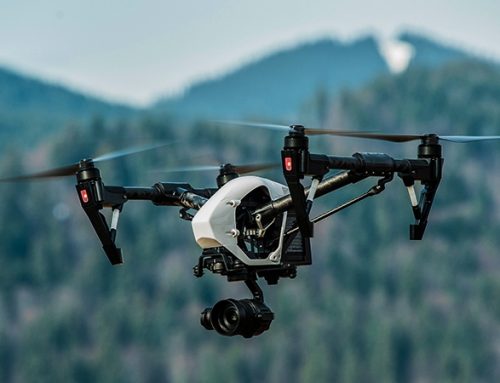This weekend the press became very excited by an announcement from the UK Government that it is commissioning new research into space-based solar power (“SBSP”) systems that would use satellites to collect solar energy and convert it into a microwave or a laser that is beamed down to ground-based receivers connected to the electricity grid. The study, led by Frazer-Nash Consultancy, will consider whether such a system could deliver affordable energy for consumers, and whether the engineering required to build it is economically and technically feasible.
“The Sun never sets in space, so a space solar power system could supply renewable energy to anywhere on the planet, day or night, rain or shine. It is an idea that has existed for decades, but has always felt decades away,”
– Dr Graham Turnock, Chief Executive of the UK Space Agency
What is SBSP and how would it work?
Energy beams from space sound like the plot of a sci-fi film and indeed the idea of capturing solar energy in space was actually first mooted by the science fiction writer, Isaac Asimov in his 1941 short story, Reason, with weaponised versions appearing in various films including the Bond film Diamonds Are Forever. The idea was first developed as a genuine technical concept by American aerospace engineer Peter Glaser who published the first paper on the concept: Power From The Sun: Its Future in the November 1968 issue of the journal Science.
The following decade saw significant interest in the scheme as the individual components required were all developed, but the cost of bringing them together in space proved too costly and interest waned.
“The idea seems to be going through a resurgence and it’s probably because the technology exists to make it happen,”
– John Mankins, former NASA scientist who was at the forefront SBSP in the 1990s
The concept is simple to articulate: an orbiting solar array would capture the sun’s energy. This energy would be converted into either microwaves or a laser, and beamed to a ground-based receiving station, where it would be converted to electricity for connection to the electricity grid.

According to the National Space Society, SBSP has the potential to dwarf all the other sources of energy combined, being able to provide large quantities of energy with very little negative environmental impact.
Unlike ground-based solar systems, SBSP can generate continuous electricity, 24 hours a day, 99% of the year, because the space environment does not have night and day or cloud cover, and satellites are in the Earth’s shadow for only around 72 minutes each day.
But capturing this potential would be no small task. A commercial SBSP system capable of producing 1 GW would weigh over 10,000 metric tons and span several kilometers.
To complete and operate such a system would require six different technical processes: wireless power transmission, space transportation, construction of large structures in orbit, satellite attitude and orbit control, power generation, and power management. Of these, the wireless power transmission part is the most challenging.
Who else is working on this?
In April 2015, a research agreement between Northrop Grumman and Caltech provided up to US $17.5 million for the development of the innovations necessary to enable a space solar power system. The team at Caltech has successfully tested a proof of concept on the ground, with prototypes that were able to collect and wirelessly transmit 10 GHz of power, and it hopes to begin testing in space within a couple of years’ time. Northrop Grumman also has a US$ 100 million partnership with the US Air Force Research Laboratory to provide advanced technology for SBSP.
Other US-based projects include NASA-backed SPS-ALPHA Mark-II concept and a scheme by the US Navy Research Laboratory which launched an experimental solar module into space in May of this year.
The China Academy of Space Technology announced that China plans to launch small to medium solar satellites in the stratosphere between 2021 and 2025, and has a target of generating megawatt-level energy from space-based solar panels by 2030, with a commercial solar space station being in operation by 2050.
The Japan Aerospace Exploration Agency (“JAXA”) has invested in SBSP since the late 1990s, and has conducted ground-based demonstrations of the technologies for microwave wireless transmission, wireless power transmission by laser, and the assembly of the large-scale structures necessary for SBSP. In 2014, JAXA announced a technology roadmap to build orbital solar power stations with a combined capacity of 1 GW by 2030. Japanese researchers have already successfully transmitted electric power wirelessly using microwaves: 1.8 kW of electric power was converted into microwaves and accurately transmitted it into a receiver 55 metres away.
What are the challenges to implementation?
The main drawback of space-based solar power is the high development cost, currently estimated to be 100 times higher than competing sources of energy. One of main drivers of these high costs is the high cost of launching the necessary components into space: solar panels are currently too heavy per watt generated to make the launch costs feasible. The current cost of launching objects into space is estimated to be £7,716 per kilogram – approximately £154 per watt. A high number of launches would also be needed to assemble all of the necessary components in space.
The environment out in space is also potentially hazardous to a solar-panel installation. Space debris and extreme solar radiation, unabated by the Earth’s atmosphere, could degrade space-based solar panels up to 8 times faster than ground-based solar panels.
Very large amounts of energy are consumed in overcoming the Earth’s gravitational pull to get objects into space in the first place. This energy needs to be taken into account when determining the round-trip efficiency of the installation.
Finally, the act of beaming so much solar energy through the atmosphere might have a heating effect that would need to be considered.
The emergence of privately funded space exploration in the past decade has brought launch costs down and stimulated new interest in the idea, but it remains to be seen whether costs can be brought low enough to be competitive.
.
The interest shown by the UK Government is very preliminary, and as such it is unlikely that space-based solar power will form any part of the forthcoming net-zero strategy. If the Government is serious about a large-scale, zero carbon technology, it should look no further than the proven Advanced Boiling Water Reactor technology proposed for the Wylfa Newydd project. ABWRs were built on time and on budget in Japan prior to the mandatory post-Fukushima shutdown, and represents a much safer bet than any of the large-scale generation alternatives currently on the table.






Hi Kathryn…..thanks for bringing things into perspective.
Great pity your reality check won’t reach the masses.
I have memories of “Tomorrow’s World” the BBC programme in the late 60’s.
One evening presenter Raymond Baxter used a fan directed at a small wind turbine whirring away.
Output was connected to a 50 watt lamp burning brightly throughout the demonstration.
The commentary left viewers with little doubt that this was the future.
Low cost energy from the wind; simple, why has this not been recognised & developed ?
In closing comments, reference to scaling up by millions was briefly referred to.
The precise nature of the problem !
I doubt the 10 million viewers heard those closing words.
Barry Wright, Lancashire.
Wireless transmission of power may be the biggest obstacle for space solar power, but it must be at least of equal importance to our earth based grids if we can manage wireless transmission of bulk electricity.
That’s a great point – wireless transmission of bulk electricity would be a game-changer for new off-shore windfarms, particularly as they will need to go further offshore in future. Whether it work for on-shore transmission, I’m not sure. There could be safety issues or issues around em interference.
Wireless transmission of electricity was the great dream of Nikolai Tesla. It is or course regularly achieved via radio waves of various frequencies, and can be demonstrated to work in a crystal radio that has no battery, but relies on the power in the radio waves. The problems are significant if you want to use it to transmit energy rather than information. Antennas struggle to be more than 50% efficient in converting input energy to radiated output, and likewise for reception, so it is not very efficient as a means of transmission: high voltage transmission lines have losses of around 2% including transformer losses at each end. Trying to ensure a narrow directional beam is also difficult, and demand the use of microwave wavelengths: even so, beam spread means you need large reception antennas if you are to capture the available energy: there are in any case almost certainly losses due to side lobes etc., even with parabolic reflectors. Atmospheric attenuation due to absorption bands is also a significant factor in adding to losses. And microwaves limit you to line of sight – no bouncing off the ionosphere.
I seem to remember that, back in 1964 Mr L Brown, of Raytheon company, demonstrated a microwave power helicopter using a magnetron and, for the receiver, an array of rectenna (dipole antenna consisting of diodes). The efficiencies were quite good.
However there are issues with the beam energy density; 1 mW/cm2 (10 W/m^2 – significantly less than sunshine peak energy densities) is the safety limit for the microwave beam energy density; transgressing this might cause problems for migrating birds or erring aeroplanes….
I believe that they are looking, in New Zealand, to exceed these density levels for inter-island power links – but with some protections for wildlife (and also periodic microwave refocussing “lenses” to cope with optical issues. Such reduction of beam size benefits the number and cost of the associated array of rectenna (which are about 5cm long)
— so, for example, a beam of size 1 metre would require 20×20 =400 rectenna – whereas a 1km beam would require a million times as many!).
I have seen reports of NASA work where they were considering a 10km diameter ground station (for health & safety reasons), which would not be cheap, and a 1km transmitter (or 750MW). This would not be cheap….!
I find the 10000 tonnes weight (for the satellite) worryingly high and wonder what steps they might take to reduce it (eg differentiate power collection , energy conversion and transmission) – otherwise costs of getting into (near) geostationary orbit would need to be of the order of £1/kg – to give the same order of cost as a nuclear power station (I believe costs for a geostationary orbit are around £20,000/kg – so a lot of light-weighting or very much cheaper rockets needed!)
That’s interesting – I hadn’t considered the impact on wildlife…in my response to David above I was thinking of communications and entertainment infrastructure being affected, but bird migration could definitely be affected. And I wouldn’t be surprised if there were affects on human health as well even at longer wavelengths.
The size/weight issues are also significant, and while it is possible to assemble large structures in space (the ISS being an example), the costs are high, particularly if the components will have relatively short lives due to the effects of radiation and orbiting debris.
When I visited NASA Houston, part of the tour was to the hangar where they had the ISS mockup assembly for astronaut training (that is training to assemble it). It really is quite impressively sizeable even if it requires a very long focal length to get a good photo of it in orbit. I live under dark skies, so transits can be spectacular, especially when they are close to overhead. In summer transits in the small hours are often visible for most of the pass: these are the most spectacular.
I’m under dark skies too and recently bought a decent telescope so will have to look out for it (if it ever stops raining that is!)
Space-based solar power : a visionary concept or mere fantasy? Explore the potential and challenges in this thought-provoking discussion.